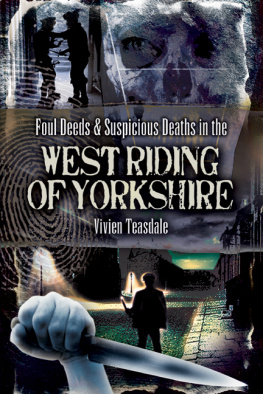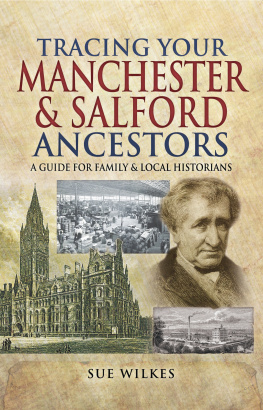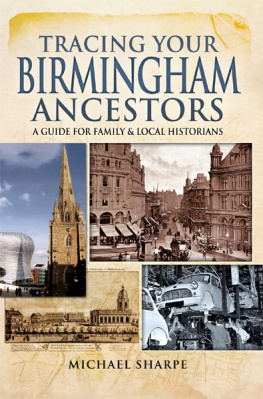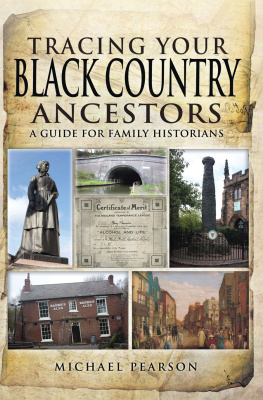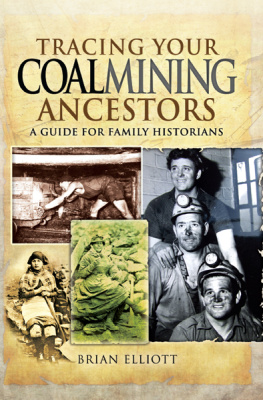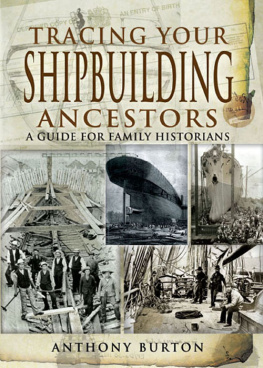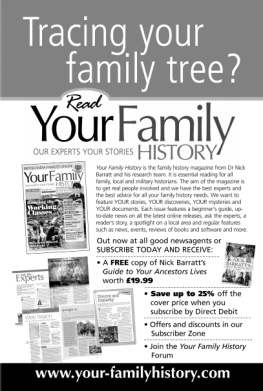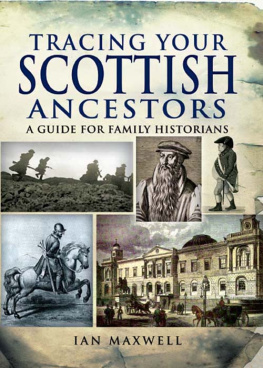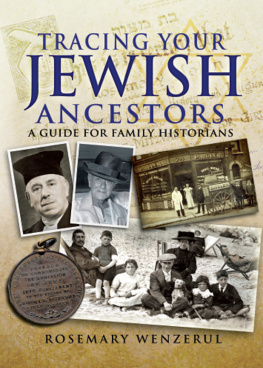The right of Vivien Teasdale to be identified as Author of this Work has been asserted by her in accordance with the Copyright, Designs and Patents Act 1988.
All rights reserved. No part of this book may be reproduced or transmitted in any form or by any means, electronic or mechanical including photocopying, recording or by any information storage and retrieval system, without permission from the Publisher in writing.
Pen & Sword Aviation, Pen & Sword Family History, Pen & Sword Maritime, Pen & Sword Military, Wharncliffe Local History, Pen & Sword Select, Pen & Sword Military Classics, Leo Cooper, Remember When, Seaforth Publishing and Frontline Publishing
ACKNOWLEDGEMENTS
A ny book of this nature requires a great deal of research, which involves visits to and correspondence with many libraries and archives. My thanks must go to every archive and record office in England and Wales that sent me information about the extent of their records. I then had the hard task of having to edit some of them. Many universities hold special collections, primarily for the purposes of academic research, but here too the archivists willingly gave me details of what might be of benefit to family historians. I have made particular use of my local libraries at Leeds, Wakefield, Manchester and Huddersfield (including the University of Huddersfield library and archives), where staff have, as always, been extremely helpful.
Over the years I have visited many museums, all of which seem to have improved unbelievably since the dry, glass-showcase days, with staff who are always friendly and obliging. Particularly I must mention the staff at Macclesfield silk mill, who gave me a guided tour and, with endless patience, explained the intricacies of the machinery on view. My thanks to all the museum staff that took the trouble to provide information and generally made my visits pleasant.
When the book finally begins to come together there is always the support of the editing and publishing team. Thanks also to Simon Fowler for his useful comments and suggestions in putting the chapters together and gathering suitable illustrations, and to John Thorpe who helped with information about the various textile processes and glossary, and to the many other people who provided countless stories, details and observations about the textile industry.
All illustrations are from the authors collection except: extract from Wool Record, courtesy of World Textile Publications Ltd; OS maps courtesy of Ordnance Survey; School Leaving Certificate, Fred Riches, Factory Regulations Act certificate, Emma Riches and inventory of stock, courtesy of Mrs Glendinning; apprenticeship indenture, Knaresborough, courtesy of Teesside Archives; Cleator Strikers, courtesy of TUC Library Collection; Christine Shepherd at Geneva, courtesy of Christine Shepherd; trade-directory extracts, courtesy of The Historical Directories site from the University of Leicester at www.historicaldirectories.org; pirn winder, Paradise Mill, courtesy of Macclesfield Silk Museum; Dragon Hall, courtesy of The Norfolk & Norwich Heritage Trust; frame-knitting machine, courtesy of Arkwrights Masson Mills, Matlock Bath, Derbyshire; ropewalk, Bewdley, courtesy of Bewdley Museum; long service and Defence of the Realm enquiries, courtesy of the Carpet Museum Trust, Kidderminster; Braintree Fountain and detail, courtesy of Roy Bracey; Gibson Mill, courtesy of Terry Teasdale.
As always, none of this would be possible without the support of my family and friends, who are, indeed, the fabric of my life.
INTRODUCTION
S ince the day our cavemen ancestors discovered that life was more pleasant when wrapped up in a fur coat, textiles have been a part of our lives. Every country in the world has utilised its natural resources to provide fabric for clothes, to furnish houses, to wrap bodies in or to provide bags, baskets and belts, as well as countless other uses limited only by our imaginations and technical skills.
The first fabrics were constructed from either animal or plant materials, but nowadays there are many man-made fibres used either in conjunction with natural materials or on their own. Each has its own peculiarities and methods of production, though improvements in transport mean there is less emphasis on relying on local resources.
This section gives an overview of how the textile industry in England and Wales developed and moved from early times to modern times. The principal textiles looked at are wool, worsted, cotton, silk and linen, though the textile industry has always consisted of a great variety of fabrics, used in a range of ways, and other branches are also considered.

House of Eumachia, Pompeii. This was the headquarters of the dyers.
The related industries expanded too. Textiles needed chemicals for a variety of treatments, finishes and dyes. By 1844 John Mercer had discovered a process that improved the properties of cotton, making it stronger, with a shiny finish that absorbed dye more easily. This became known as mercerised cotton. In 1856 William Perkin discovered a synthetic dye aniline purple and other synthetic dyes soon followed, though Germany rapidly became predominant in this field.
Machines were needed for the growing textile industry, giving rise to the symbiotic development of engineering in many of the textile towns.
Nowadays man-made fibres must be considered too, though they are only briefly examined here. The textile industry in the twentieth century has been on something of a roller coaster. There was a downturn at the beginning of the era, which was boosted hugely by the need for cloth during the First World War, with many firms making considerable profit. Britain was one of the first countries to industrialise but this meant that many of the machines were in use for decades. As other countries began their own industrialisation, they were able to start with better, faster, more efficient machines, many of them copied from British ones or even bought in Britain and shipped abroad. British industry was slow to replace obsolete machinery and lost its competitive edge. With increasing globalisation, markets were lost to foreign trade and depression set in, being alleviated somewhat again by the intervention of war in 1939.
After the Second World War, textiles continued its long decline. For example, in 1950 the cotton mills in Lancashire employed 320,000 people, yet by 1982 they employed just 35,000. By 2005 this had fallen to about 7,200 (source: ONS Annual Business Inquiry, 2005).
The increased use of synthetics, such as polyester, nylon and Terylene, required large injections of capital to fund specialised machinery rather than large numbers of skilled workers. The material could be produced anywhere in the world, no longer relying on natural raw materials. Businesses either folded or amalgamated, giving rise to large, dominant companies such as Courtaulds, Viyella International, English Sewing Cotton Company and Carrington & Dewhurst. Wages were held down and in the 1950s there was an increase in immigrant workers, from the Caribbean, from Poland during and after the war and from India and Pakistan from about 1960.


